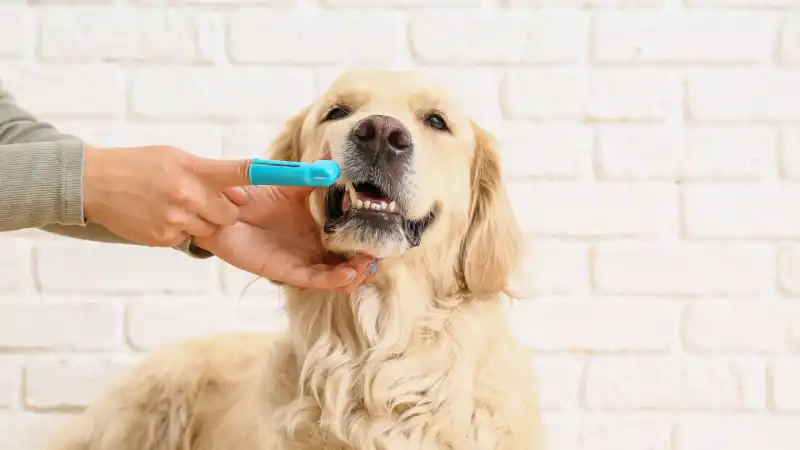What Do You Know About the Dog Flu?
Can dogs get the flu? What are the symptoms of dog flu? Could your dog be feeling under the weather? Find out how to tell and what to do when your dog gets the flu.

We’ve all seen the news reporting that the 2017/2018 flu season is one of the worst on record. We take precautions for ourselves, our children and our elderly family members. We diligently get the flu vaccine, we wash our hands regularly, and we avoid high volume areas where the virus can be festering. But what about our canine companions? What precautions are we taking to protect our best bud this flu season?
Human Flu or Dog Flu?
The “dog flu”, or canine influenza, has some similarities to the human flu but also some major differences. The big questions on most people’s minds is, “can I give my dog the flu?” and “can I catch the flu from my dog?” The (not so simple) answer is yes, but extremely unlikely! If you get the flu, chances are you contracted it from another human-being. Conversely, if your dog gets the flu, they most likely got it from another dog. That said, if by chance, you and your dog are both exhibiting flu-like symptoms at the same time, it’s worth taking a trip to the doctor (and the vet—separately!) Your doctor and veterinarian will be able to advise you on what flu strains are in your area and what the odds are that you and your faithful friend are coming down with the same strain.
What is Canine Influenza
Back to canine influenza. Just like the human flu, canine influenza is caused by infection with a specific type of influenza virus. There are also many different strains of the canine influenza virus. Some are more contagious than others, but all are highly contagious from dog to dog!
How is it Spread
Canine influenza is spread through the exchange bodily fluids, like saliva, ocular (eye) discharge, nasal discharge and fecal routes. The transmission can occur in a variety of ways:
Direct contact with another dog
Inhalation from another dog’s cough droplets
Contact with contaminated items like bedding, food/water bowls and people’s hands
There are places you can avoid to prevent this type of transmission from happening. These places typically have a large population of unknown dogs like:
Dog parks
Doggie day cares
Boarding facilities
Dog shows
Dog club meetings
What to Look For
You’re worried your dog might have the flu but you’re unsure of the symptoms. Here are some of the most common signs of the disease:
Coughing– A cough with the flu can be wet or dry. It may or may not be productive.
Sneezing– Dogs sneeze occasionally but if the sneezing becomes excessive or if the sneezing is productive, there may be an underlying issue.
Eye discharge– Some dogs are prone to runny eyes. If your dog does not normally have “runny eyes,” or the discharge is thick or purulent (green/yellow), there may be a problem.
Nasal discharge- Nasal discharge associated with the flu could be clear or mucus.
Fever- It’s difficult to tell if your dog has a fever without actually taking his temperature. A healthy dog’s body temperature ranges from 101 to 102 degrees—well above a human’s normal temperature. A dog’s temperature is taken rectally with a digital thermometer. Next time you are at the vet, ask a technician to teach you how to take your dog’s temperature.
Loss of appetite– This could mean decreased interest in food (not finishing a meal, nibbling, etc.) or complete refusal to eat.
Vomiting– Vomiting is less common but can occur, especially if your dog already has a sensitive stomach.
Believe it or not, some dogs who have the flu don’t exhibit any signs at all! They may recover completely without you ever knowing they were sick! The concern is that, though the dog didn’t get “sick,” the dog was still a carrier of the virus and could have transmitted it to other dogs.
What to Do if You Suspect the Flu
Don’t be alarmed and rush your dog to the veterinarian if he or she coughs or sneezes once, but if symptoms persist or are accompanied by other symptoms, it is definitely worth a call to the vet. Due to how highly contagious the virus is, your vet may want you to call before coming into the office for a visit because a special protocol may be in order during your appointment to ensure your dog does not infect other pups (Think of the surgical masks that humans all wear in urgent care – both doctors and patients – during human flu season! Taking extra precautions can help keep others healthy.) . In addition, your vet may have recommendations over the phone.
Typically, canine influenza is diagnosed based on clinic signs or symptoms. Your veterinarian will ask you what symptoms your dog is exhibiting, the duration of the symptoms and recent activity or travel. They will also take into account of any outbreaks in your area. If your veterinarian recommends you come in for a visit, they will perform a thorough physical exam and may take fluid samples to diagnose an infection. This may or may not be necessary.
Treatment
Most dogs will recover on their own with no medical intervention. It’s important for the pup patient to stay hydrated and get plenty of rest until he’s feeling and acting like his normal self. In more severe cases, or when symptoms have been on-going, your veterinarian may prescribe antibiotics to treat any secondary infections.
There are a few things you can do to ensure your pup has the quickest recovery possible. Refrain from visiting high volume places like dog parks and day cares. Do your best to separate the infected patient from your other pets. If your pets typically share a water bowl, give them separate bowls until symptoms resolve. Wash bedding and blankets regularly. Use a pet-safe disinfectant to clean areas with which your pets come into contact. Finally, wash your hands regularly after petting your pup or handling his belongings.
Prevention
To prevent your dog from contracting the virus, ensure they stay up to date on their canine influenza vaccine. If you are unsure, consult your veterinarian. Be aware of any outbreaks in your area. As stated above, avoid high volume meeting places like dog parks and doggie day cares. Most importantly, be observant of your dog’s behavior and attitude. You know your dog best. If you suspect there is a problem, it is never wrong to call the vet.
Enjoy this winter season! Don’t spend February “sick as a dog.” Or sick with your dog!
For more information on canine influenza and other Top Health Concerns for canines, visit the AKC Canine Health Foundation.
The information provided in this blog is intended for educational purposes only and should not serve as a substitute for the professional medical advice of your veterinarian. Always consult your veterinarian with questions about your pet’s health and before initiating any treatment regimes.

Every Dog and Cat Deserves the Pet Insurance of Champions
Get prize-winning care for your pets.

Erin Tursam comes to AKC Pet Insurance with a background in veterinary medicine. As the Marketing Manager at PetPartners, she uses her knowledge and experience to help pet owners better understand the health needs of their pets and how pet insurance can help keep them happy and healthy. Erin lives in Apex, NC and has a 13-year-old Cavalier King Charles Spaniel and 7-year-old Doberman.
READ MORE ARTICLES

